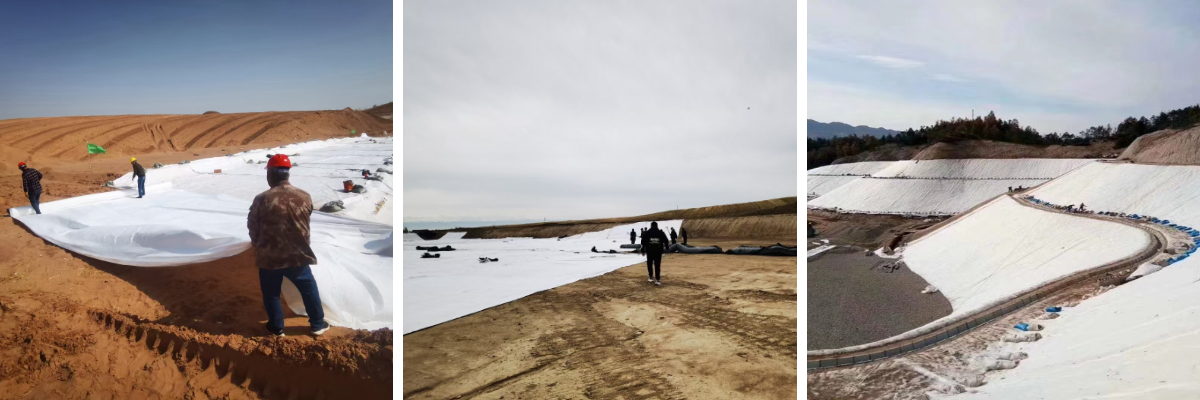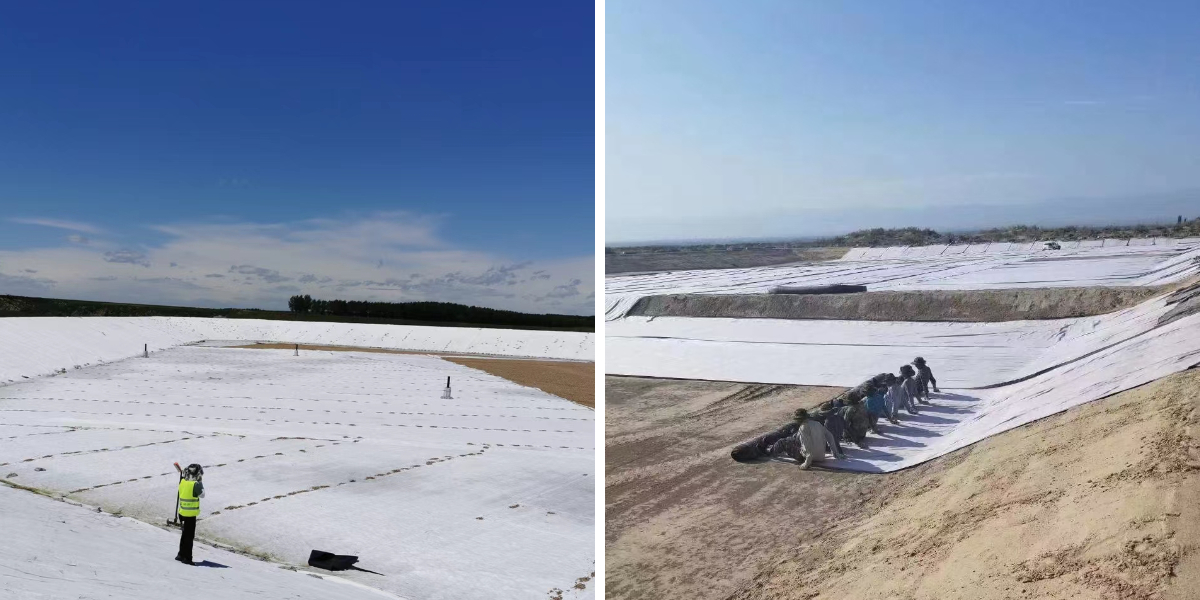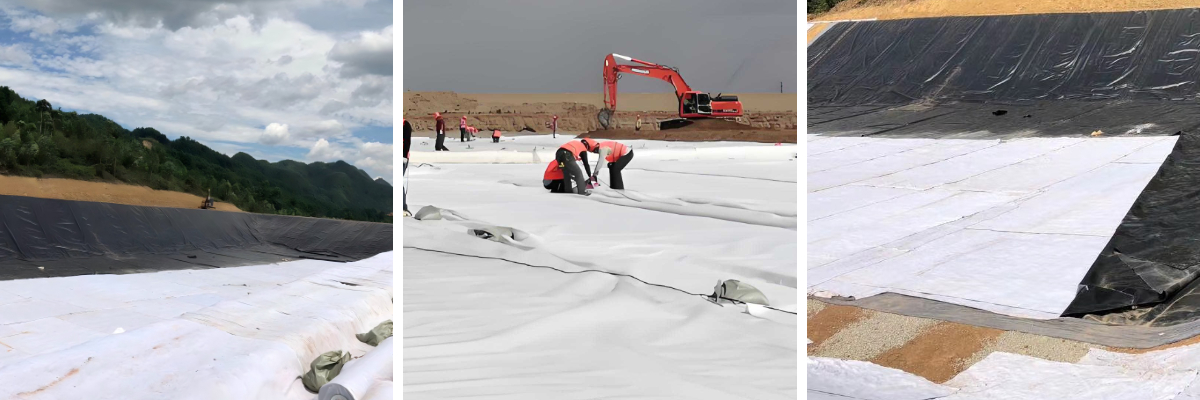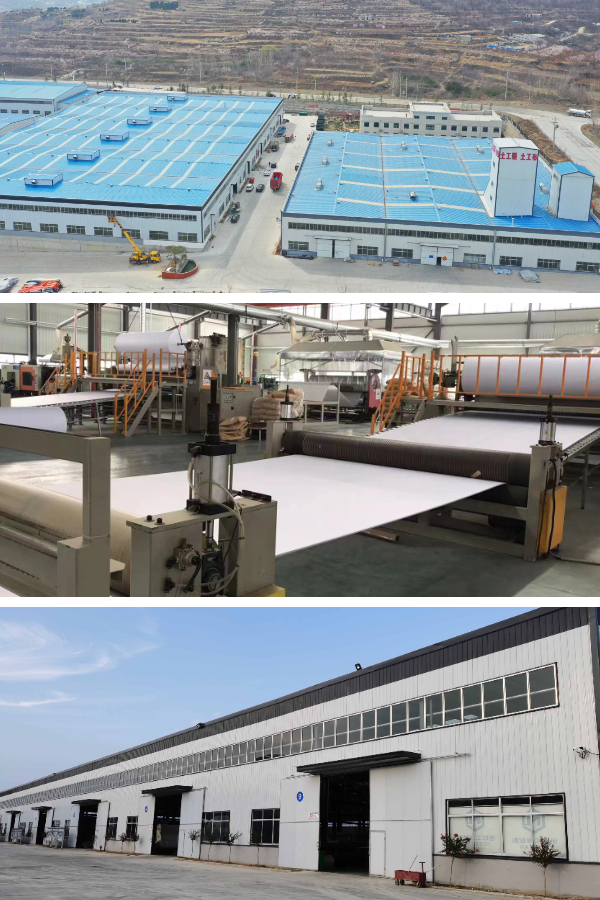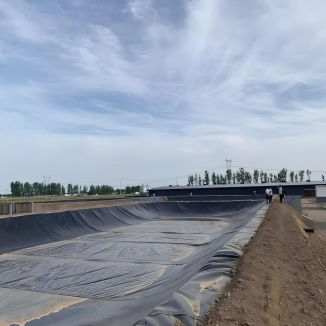Different Geotextile
1. Full coverage of functions: including non-woven, woven and other types, suitable for filtering, reinforcement, isolation and other scenarios, meeting diverse engineering needs.
2. Strong scene adaptation: Temperature resistance, corrosion resistance and other characteristics can be customized to adapt to different environments such as roads, water conservancy, horticulture, etc.
3. Outstanding cost-effectiveness: Low material cost, convenient construction, labor saving, and low long-term maintenance costs.
4. Good ecological compatibility: Environmentally friendly materials are pollution-free, and some can help vegetation growth, balancing engineering and ecological protection.
Products Introduction:
Different Geotextile refers to a collection of geotextile categories classified based on differences in process and performance. The core includes four categories: non-woven geotextiles, woven geotextiles, knitted geotextiles, and composite geotextiles, all of which are made of high molecular weight fibers such as polypropylene (PP) and polyester (PET), and achieve functional differentiation through different processing techniques.
Various types of geotextiles are designed to meet the different core requirements of "reinforcement, filtration, drainage, and isolation" in engineering: non-woven geotextiles focus on filtration and adhesion, woven geotextiles emphasize high-strength reinforcement, knitted geotextiles balance elasticity and breathability, and composite geotextiles integrate multiple functions. This characteristic of "classified design and on-demand selection" covers the entire scene from basic civil engineering to ecological restoration, and is the core material for flexible adaptation to requirements in civil engineering.
Product Features:
Dual optimization of filtration and drainage: The fibers are randomly interwoven to form a three-dimensional porous structure with uniform pores (0.05-0.3mm), and the fine soil retention rate exceeds 95%. At the same time, the permeability coefficient is ≥ 1 × 10 ⁻ cm/s, which quickly diverts water and is suitable for scenarios such as garbage landfill reverse filtration and river bank slope protection.
Flexible and snug fit: With a soft texture that can bend with the terrain, it tightly adheres to irregular base layers such as potholes and slopes, avoiding blind spots during laying. There is no need for complex cutting during construction, and it can be operated manually.
Cost economy: The production process is simple, the unit price is lower than that of woven geotextiles, and it is suitable for large-scale laying (such as farmland irrigation and temporary access roads). The overall cost is 15% -20% lower than traditional protective materials.
(2) Woven Geotextile
High strength tensile resistance: The warp and weft yarns are tightly interwoven, with a longitudinal/transverse tensile strength of 20-100kN/m. It has outstanding tear and creep resistance, can disperse heavy loads, and is suitable for scenarios such as high fill roadbeds and reinforced retaining walls.
Stable and durable structure: The fabric has a regular texture, strong surface wear resistance, acid and alkali resistance, and UV resistance. It has a service life of 10-20 years in outdoor environments and is suitable for long-term projects such as highways and dam protection.
Controllable permeability: By adjusting the yarn density to control the pore size, a flexible balance between "drainage" and "anti-seepage" can be achieved, adapting to the needs of channel isolation, pavement base protection, and so on.
High elasticity and deformation resistance: using coil weaving technology, the elongation rate can reach 50% -100%, which can adapt to deformation caused by base settlement and temperature changes, avoid material damage, and adapt to easily deformed scenarios such as soft soil foundation and expansive soil slope.
Breathable and environmentally friendly: The coil structure has good breathability and can grow synergistically with vegetation roots, without hindering soil and air exchange. It is suitable for scenarios such as ecological slopes and roof greening that require high breathability.
Functional compounding: By combining "non-woven+woven" and "geotextile+geomembrane", it has multiple functions (such as "filtration+reinforcement" and "isolation+anti-seepage"), and is suitable for complex projects (such as underground pipe galleries and landfill anti-seepage systems).
Performance complementarity: Avoiding single type shortcomings, such as "non-woven layer filtering+woven layer reinforcement", not only solves the problem of poor filtering of woven fabrics, but also compensates for the insufficient strength of non-woven fabrics, improving the overall protective effect.
Product Parameters:
project | metric | ||||||||||
Nominal strength/(kN/m) | |||||||||||
6 | 9 | 12 | 18 | 24 | 30 | 36 | 48 | 54 | |||
1 | Longitudinal and transverse tensile strength / (kN/m) ≥ | 6 | 9 | 12 | 18 | 24 | 30 | 36 | 48 | 54 | |
2 | Maximum elongation at maximum load in longitudinal and transverse directions/% | 30~80 | |||||||||
3 | CBR top penetration strength /kN ≥ | 0.9 | 1.6 | 1.9 | 2.9 | 3.9 | 5.3 | 6.4 | 7.9 | 8.5 | |
4 | Longitudinal and transverse tearing strength /kN | 0.15 | 0.22 | 0.29 | 0.43 | 0.57 | 0.71 | 0.83 | 1.1 | 1.25 | |
5 | Equivalent aperture O.90(O95)/mm | 0.05~0.30 | |||||||||
6 | Vertical permeability coefficient/(cm/s) | K× (10-¹~10-), where K=1.0~9.9 | |||||||||
7 | Width deviation rate /% ≥ | -0.5 | |||||||||
8 | Unit area mass deviation rate /% ≥ | -5 | |||||||||
9 | Thickness deviation rate /% ≥ | -10 | |||||||||
10 | Thickness coefficient of variation (CV)/% ≤ | 10 | |||||||||
11 | Dynamic perforation | Puncture hole diameter/mm ≤ | 37 | 33 | 27 | 20 | 17 | 14 | 11 | 9 | 7 |
12 | Longitudinal and transverse fracture strength (grab method)/kN ≥ | 0.3 | 0.5 | 0.7 | 1.1 | 1.4 | 1.9 | 2.4 | 3 | 3.5 | |
13 | Ultraviolet resistance (Xenon arc lamp method) | Longitudinal and transverse strength retention rate% ≥ | 70 | ||||||||
14 | Ultraviolet resistance (fluorescence UV lamp method) | Longitudinal and transverse strength retention rate% ≥ | 80 | ||||||||
Product Applications:
(1) Classify applications by scenario
Transportation Engineering:
Woven geotextile: used for reinforcing high fill roadbeds on highways and railways to reduce settlement;
Non woven geotextile: laid on the pavement base to isolate soil materials, divert rainwater, and prevent pavement cracking;
Composite geotextile: used for tunnel anti-seepage layer, balancing filtration and waterproofing.
Water Conservancy and Ecological Engineering:
Non woven geotextile: river bank slope protection, combined with vegetation planting to intercept soil and prevent soil erosion;
Knitted geotextile: ecological embankment slope, adapted to deformation caused by water level changes, protecting vegetation roots;
Woven geotextile: The upstream slope of the dam is designed to resist water erosion and protect the dam structure.
Municipal and Livelihood Engineering:
Non woven geotextile: the base layer of the parking lot floor in the residential area, filters and drains water to prevent the floor from sinking;
Composite geotextile: outer wall protection of underground pipe gallery, soil isolation, anti-seepage and anti-corrosion;
Knitted geotextile: Under the green planting layer of the roof, it is breathable and drainage, protecting the waterproof layer of the roof.
Agriculture and Temporary Engineering:
Non woven geotextile: used for irrigation channels in farmland to protect channel walls, filter sediment, and reduce blockages;
Woven geotextile: construction of temporary access road base to enhance bearing capacity and adapt to heavy machinery compaction.
(2) Typical combination application
In high-grade highway engineering, a combination of "woven geotextile (deep reinforcement)+non-woven geotextile (middle filter)+composite geotextile (shallow anti-seepage)" is used: the woven layer enhances the bearing capacity of the roadbed, the non-woven layer diverts rainwater, and the composite layer prevents surface water infiltration, all of which work together to ensure long-term stability of the road surface.
Different Geotextile takes "precise classification, complementary functions, and full scene coverage" as its core advantages. Through differentiated design of non-woven, woven, knitted, and composite types, it completely solves the pain points of "single function and poor adaptability" of a single geotextile. Various types of geotextiles can independently meet specific needs (such as non-woven fabric filtration and reinforcement for woven fabrics), and can also be combined to cope with complex engineering scenarios, achieving a "1+1>2" protective effect.
It combines performance reliability and economic practicality: its weather resistance and anti-corrosion properties ensure long-term use, convenient construction reduces labor costs, and environmentally friendly materials are suitable for ecological needs. It is an ideal material for modern civil engineering that is "efficient, flexible, and sustainable". Whether it is large-scale infrastructure or livelihood projects, Different Geotextile can balance engineering safety, ecological protection, and cost control through precise selection, provide customized protection solutions for various projects, and promote the development of civil engineering towards a more efficient and green direction.





